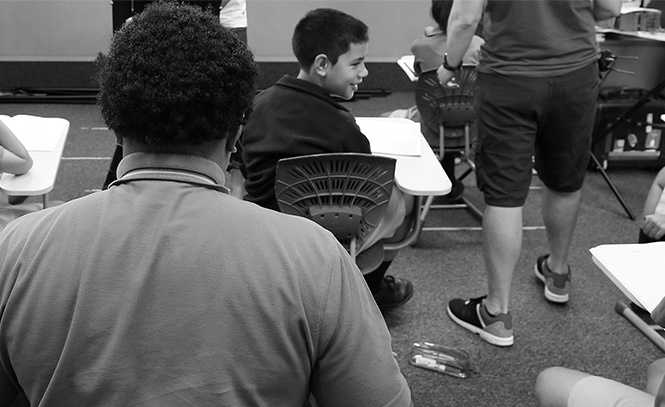- Rugby Toolbox
- The Game
- Teen Rugby
- Teenager
- Teenage Little Black Book
- Research Methodology and Process
- Introduction
- Research Methodology and Process
- Who are we Dealing With?
- In or Out!
- The Wish List
- The Rugby Player’s Pivotal Milestones
- The Start
- Mates
- Adults and Parents
- The Car Ride Home
- Side Lines
- Coaching
- Guidelines for Communicating with Teens
- Technology and Communication
- Injury
- Winning
- Training
- It’s Not All Doom and Gloom
- Half Game Rule
- In Their Own Words
- Solutions or More Problems?
- Conclusion
- Addendum
Research Methodology and Process

Research methodology and process
New Zealand Rugby wanted the research to be an independent, credible and accurate account of New Zealand teenage males’* attitudes and beliefs about the game.
The first piece of research was conducted by New Zealand Research, and comprised of a total sample of 1,686 males from Years 9-13 from around the country. Subjects included current, past and non-rugby players who were still in school, plus school leavers.
Sixty-two percent identified as New Zealand European, 19% Maori, 20% Pacific Island and 7% Asian.
A particular focus was placed on understanding the beliefs, attitudes and perceptions of those boys who were current players in the 2012 season but considered ‘at risk’ of not playing in 2013, the following season.
New Zealand Rugby enlisted the assistance of the New Zealand Secondary School Sports Council (NZSSSC). A sample of n=26 secondary schools was selected in regions where the NZSSSC is well represented and has a positive relationship with schools.
The regions represent 60% of the 13-20-year-old players registered with the New Zealand Rugby Union in the 2011 season.
An additional sample of boys who had been registered to play in the 2011 season was also interviewed and, again, the emphasis was placed on those boys ‘at risk’. **
While the sample is effectively a ‘convenience’ sample, it is considered to be a reasonable cross-section of schools in terms of roll size, single-sex and co-ed schools, as well as representing a fair proportion of rural and suburban schools.
All n=26 schools were public schools and the lack of private schools is possibly the only shortcoming of this research.
Depending on the number of boys enrolled in each of the sampled schools, one or two Year 9-13 classes were randomly selected. Working with the school principals, the NZSSSC’s Regional Sports Directors made arrangements for the selected classes to complete an independent and anonymous questionnaire in a classroom setting.
All subjects, regardless of whether they were current or past rugby players, or had never played rugby, were required to complete the questionnaire. Interviewing took place between Monday 30 July and Monday 3 September 2012, resulting in a total sample of n=1,674 Year 9-13 boys.
This sample was supplemented by a further sample of n=287 recent school leavers aged 19 years or younger who were registered players in the 2011 season. New Zealand Rugby held email addresses for these teens and invited them to complete the research questionnaire online.
The Year 9-13 research results have been weighted, ensuring any result quoted in this report which was based on the total sample of Year 9-13 boys, is representative of the age group in question.
Weighting adjustment is common practise in research to ensure the results are a more accurate representation of the population in question. In the case of this research, a disproportionately higher percentage of Year 13 boys was interviewed, which was corrected using weighting adjustment and Ministry of Education statistics.
Given the purpose of the research, the analysis of the results has been undertaken based on current Year 9-13 players and recent school leavers ‘at risk’ of not continuing to play rugby in the following season. These groups have been identified based on a question which specifically asked these players if they were planning to play next season.
One thing was clear after looking at the responses from the initial survey – we needed to know more. We needed to drill down further and gain more meaningful insight from these young men.
This led to New Zealand Rugby commissioning Colmar Brunton to carry out focus group-based research.
The focus groups comprised of four groups of young people.
The first group, named ‘Disengaged’, was made up of eight teens aged 14-16 years from South Auckland, all lapsed players.
The second group, ‘Lost in translation’, were three teens aged 17-18 years, a mix of current and lapsed players at a school level, who indicated they would not continue playing rugby after school. They came from the North Shore in Auckland.
The third group, ‘Out in the sticks’, were nine teens aged 14-17 years and included a mix of current and lapsed players from the South Island’s Balclutha.
Lastly, another ‘Disengaged’ group of seven teens aged 14-17 years, a mix of current and lapsed players from Balclutha in the South Island.
‘Adult group A’ was a group of parents with children either currently playing rugby, or whose children had stopped playing rugby in the past 12 months.
‘Adult group B’ was a group of adults involved in the school rugby system, including heads of rugby, coaches, managers and coordinators.
The focus group discussions were filmed, and the main points put together in 10-minute videos, which were later shown to key stakeholders of the game who discussed the differing views and opinions of the individual groups.
Well it’s fair to say, after the parents had heard what the teens had to say you could have knocked them over with a feather, such was the difference in their thinking.
The teachers in the groups were far quicker to respond to the teenagers’ points of view - by immediately blaming the parents.
**Boys unlikely to play or were unsure whether they would play have been identified as being ‘at risk’